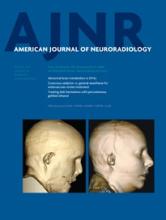Abstract
BACKGROUND AND PURPOSE: The Silk flow-diverter stent is increasingly used to treat complex intracranial aneurysms including wide-neck, fusiform aneurysms. Sparse data are available concerning long-term results of this technique. We report our 5-year experience with Silk stent treatment of intracranial aneurysms.
MATERIALS AND METHODS: A retrospective review of our prospectively maintained database identified all patients treated by the Silk stent in 2 institutions. Clinical charts, procedural data, and angiographic results were reviewed.
RESULTS: Between July 2009 and May 2014, we identified 58 patients with 70 intracranial aneurysms. Endovascular treatment was successful in 93% of patients with 32 treated with the first-generation Silk stent and 26 with the new Silk+ stent. Mean follow-up in 47 patients was 22 months. Despite an 11% delayed complication rate, overall permanent neurologic morbidity was 5.5%. All complications were seen with the first-generation Silk stent. There was no procedure-related mortality. Long-term anatomic results showed 73% with complete occlusion, 16% with neck remnants, and 11% with incomplete occlusion. No recanalization or retreatment was performed. The midterm intrastent stenosis rate was 57%, of which 60% improved or disappeared, 28% were stable, and 12% led to vessel occlusion. Seventy-four percent of stenosis and all vessel occlusions occurred with the first-generation Silk stent.
CONCLUSIONS: Endovascular treatment of complex intracranial aneurysms with the Silk stent is an effective therapeutic option. Despite a high rate of delayed complications with the first-generation stents, the current Silk+ stent appears safer. This treatment achieves a high rate of adequate and stable occlusion at long-term follow-up.
ABBREVIATIONS:
- CLARITY
- Clinical and Anatomical Results in the Treatment of Ruptured Intracranial Aneurysms
- PAO
- parent artery occlusion
- © 2015 by American Journal of Neuroradiology












